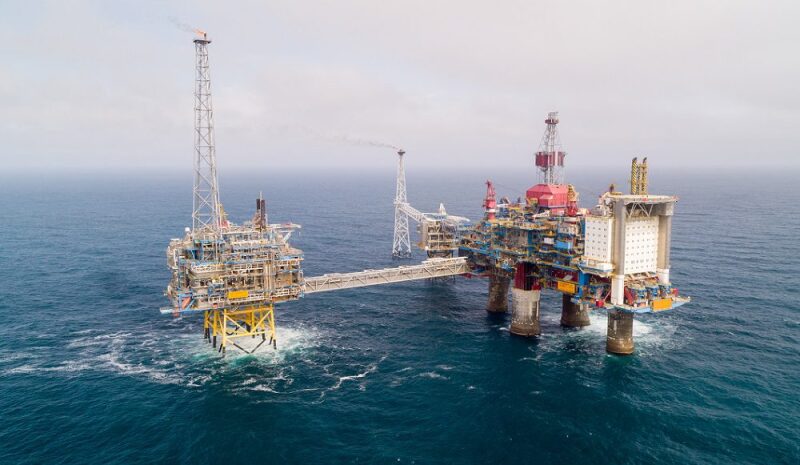Norway’s Equinor has successfully incorporated partial shore power to its Sleipner field center, along with the Gudrun offshore platform and other associated fields. The conversion from burning natural gas for power to electricity is expected to reduce annual emissions from the Norwegian Continental Shelf (NCS) by 160,000 tonnes of CO₂.
All installations on the Utsira High are now receiving power from shore, saving emissions amounting to about 1.2 million tonnes of CO₂ per year, according to the operator. The electrification of the installations is in line with the plan for development and operation for Johan Sverdrup Phase 2, which was approved by the Norwegian parliament in 2019.
One of two gas turbines on the Sleipner A platform will gradually be shut down as systems transition to using power from shore. Equinor will keep the other gas turbine on standby as a backup power source during a run-in phase. Later, Sleipner will fully operate on power from shore.
The Sleipner field center has been supplied with onshore power via a cable from the Gina Krog platform since 24 March 2024. Starting on the same date, the Gudrun platform was connected to electricity through the existing cable to Sleipner.
“The Sleipner area has delivered vast volumes of energy, created long-term ripple effects, and contributed substantial values to the Norwegian society,” said Kjetil Hove, executive vice president for exploration & production Norway. “With power from shore, we can develop new discoveries and resources from low-emission production, and gas export from the area can be maintained for a long time to come.”
The Utsira High power grid includes the following installations: Johan Sverdrup, Gina Krog, Sleipner, Gudrun — all operated by Equinor, along with Edvard Grieg and Ivar Aasen, both operated by Aker BP.

The Sleipner fields are among the largest gas producers in the North Sea and serve as a hub for gas transport to Europe. Norwegian gas plays an important role in the EU’s energy transition. Natural gas that would otherwise have been used to power the installations can now be utilized more effectively in Europe.
Equinor said overall investments in the project total NOK 1.08 billion.
In 2020, the Sleipner partnership exercised an option with Aibel for an EPCIC contract (engineering, procurement, construction, installation and commissioning) for the modification work on the Sleipner field center. NKT was awarded the contract to manufacture and lay the power cables. The EPCIC contract has a value of about NOK 700 million.
ABB has carried out substantial work as a subcontractor within installation of high-voltage equipment and updating the power control system.
Equinor operates the Sleipner East license and holds a 59.6% working interest. Vår Energi ASA (15.4%), PGNiG Upstream Norway AS (15%), and Orlen Upstream Norway 2 AS (10%) are partners in the tract.
The licensees in the Gudrun license are Equinor (operator, 36%), Vår Energi Norge AS (25%), OMV (Norge) AS (24%), and Repsol Norway AS (15%).
Other North Sea operators have been put on notice regarding electrification requirements for their offshore assets. Last month, the North Sea Transition Authority unveiled an updated emissions reduction plan that includes new rules to force operators to adopt electrification while mitigating flaring and venting, or risk losing their operating licenses in UK territorial waters.


